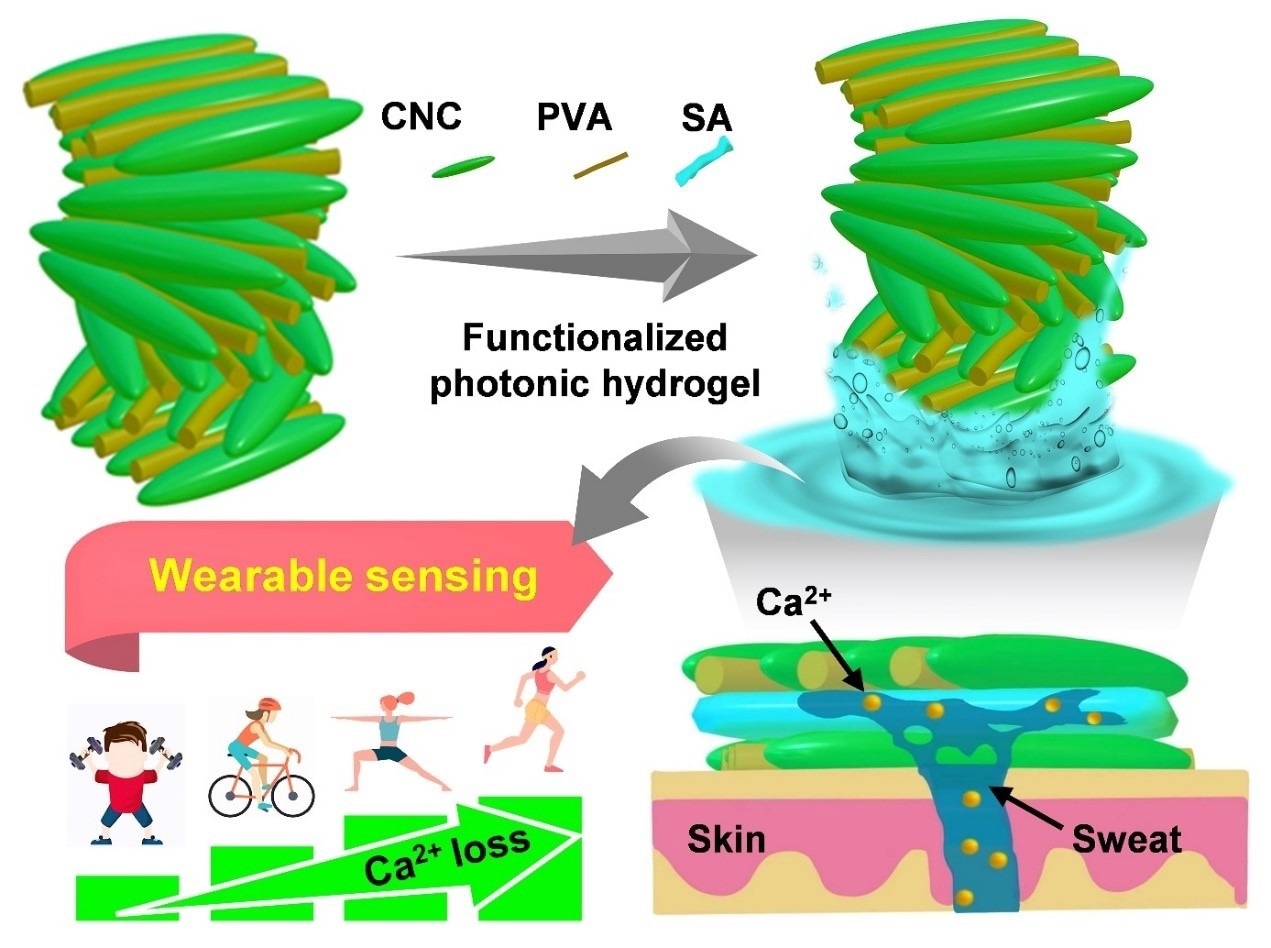
Highly elastic hydrogels constructed by heat-induced hydrogen bond remodeling can switch between wet and dry states. Image Credit: ZHANG Fusheng and LI Qiongya
But the functional failure of such materials in wet or liquid surroundings unavoidably impairs their development in membrane separation, biomedicine, wearable devices, and environmental monitoring.
Currently, a research group headed by Professor Guangyan Qing from the Dalian Institute of Chemical Physics (DICP) of the Chinese Academy of Sciences reported an insoluble, tenable, and chiral photonic cellulose nanocrystal patch available for calcium ion (Ca2+) sensing in sweat.
The new study performed offers a new concept for the functionalization of CNC.
The study was reported in the journal Small on April 13th, 2023.
An easy and efficient technique to fabricate insoluble CNC-based hydrogels has been developed by scientists. They discovered that by using intermolecular hydrogen bond reconstruction, thermal dehydration allowed the improved CNC composite photonic film to develop into a stable hydrogel network in an aqueous solution.
Furthermore, they denoted that it is possible to reversibly switch the hydrogels between dry and wet states, which was appropriate for particular functionalization.
The initiation of functionalized molecules by adsorption swelling in a liquid surrounding led to a hydrogel with freeze resistance (–20 °C), good biocompatibility, strong adhesion, and high sensitivity to Ca2+
This work is expected to facilitate the application of sustainable cellulose sensors to monitor other metabolites (i.e., glucose, urea, and vitamins, etc.). It also lays foundation for digitally controlled hydrogel systems operating in environment monitoring, membrane separation, and wearable devices.
Guangyan Qing, Professor, Dalian Institute of Chemical Physics, Chinese Academy of Sciences
Journal Reference:
Li, Q., et al. (2023) Sustainable, Insoluble, and Photonic Cellulose Nanocrystal Patches for Calcium Ion Sensing in Sweat. Small. doi.org/10.1002/smll.202207932